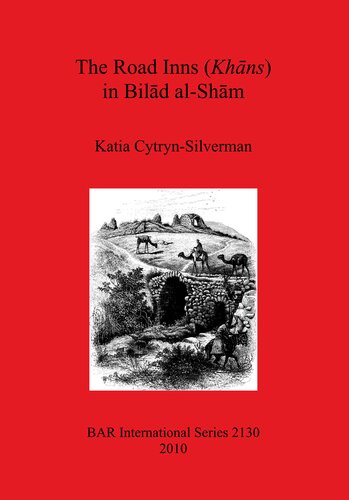

Most ebook files are in PDF format, so you can easily read them using various software such as Foxit Reader or directly on the Google Chrome browser.
Some ebook files are released by publishers in other formats such as .awz, .mobi, .epub, .fb2, etc. You may need to install specific software to read these formats on mobile/PC, such as Calibre.
Please read the tutorial at this link: https://ebookbell.com/faq
We offer FREE conversion to the popular formats you request; however, this may take some time. Therefore, right after payment, please email us, and we will try to provide the service as quickly as possible.
For some exceptional file formats or broken links (if any), please refrain from opening any disputes. Instead, email us first, and we will try to assist within a maximum of 6 hours.
EbookBell Team

4.0
26 reviewsThe term khan can refer to urban and rural hostelries, relay stations of the Mamluk royal mail, fortresses, farmhouses, warehouses, and others. This multiplicity of meanings naturally complicates a study that aims at analysing only one of these functions — in this case the rural hostelries. The first comprehensive study on Near Eastern inns (Die Karawanserai im vorderen Orient) was published by K. Müller in 1920. Since then relatively few works have been dedicated to the subject of en route architecture in the Islamic lands and the road inns in particular. This study focuses mainly on an integrated survey of historical and archaeological evidence, presented in three sections, dealing respectively with issues of terminology, patronage, and architecture. These discussions relate to the gazetteer of surveyed buildings, presented in chapter 5. The danger lies in the inclusion of invalid samples in the research environment. Chapter 2 aims to avoid taking misinterpreted structures into consideration by establishing clear parameters before commencing a proper classification of the structures. Chapter 3 deals with the period and region under discussion. Against the background of patronage, this chapter treats the probable reasons, as well as patterns, for a relative boom in the construction of such monuments. Chapter 4 summarises the main architectural issues of the khans of Syria, both in the course of the archaeological survey undertaken between 1998 and 2002. The Gazetteer in chapter 5 approaches the same issues, i.e., architecture, history and patronage, but treats each site separately. It combines field, library and archival work, and aims at a comprehensive corpus of Mamluk khans in the southwest of Greater Syria. This work is intended to be part of a long-term study of the inns of Greater Syria, encompassing sites dating from early Islamic to Ottoman times and dealing, among others, with their architectural and functional transformations.